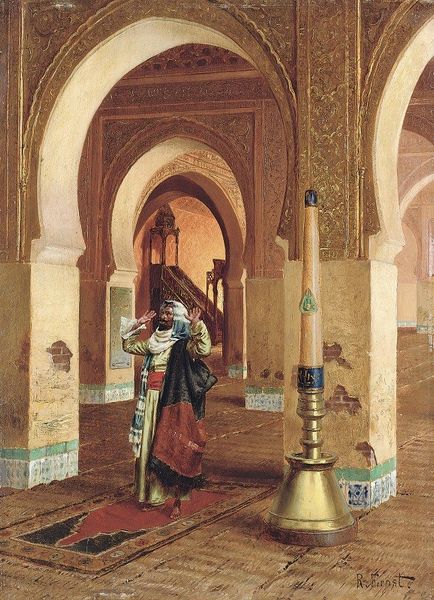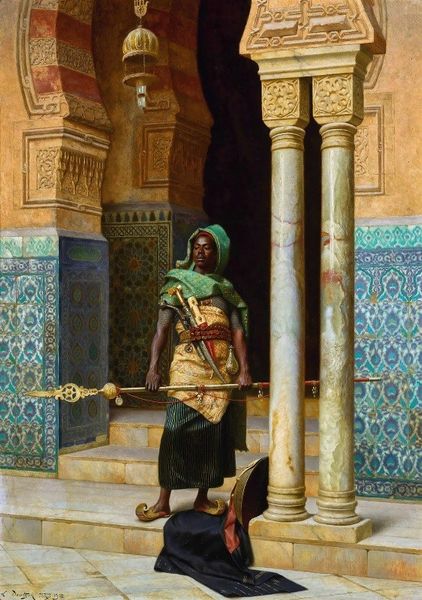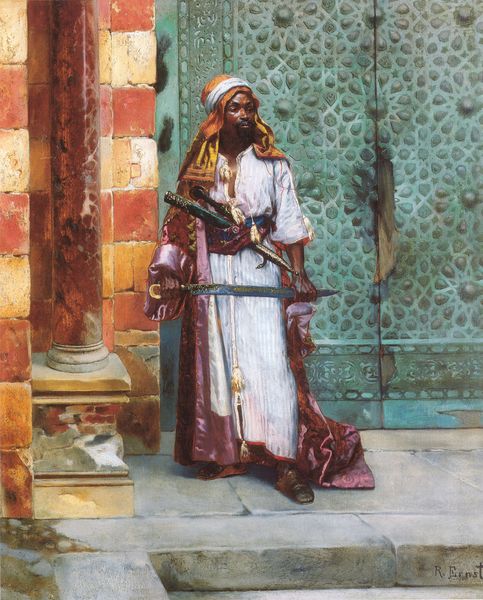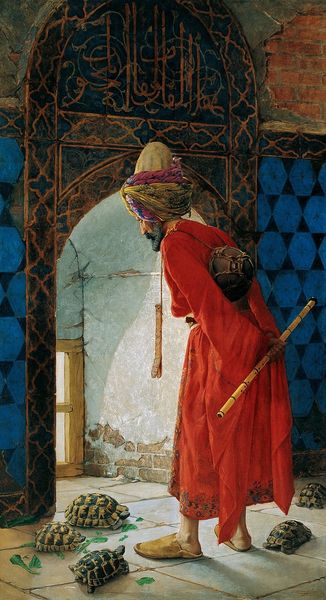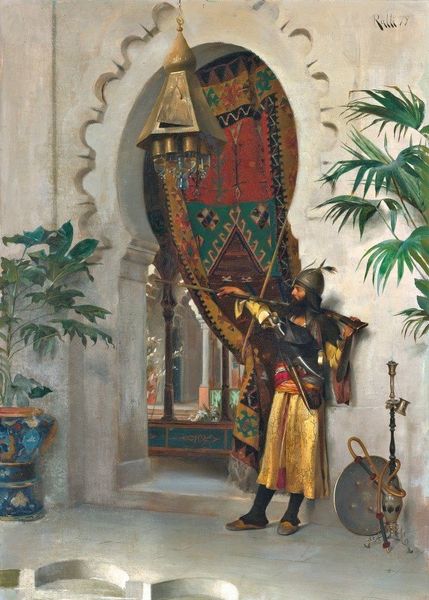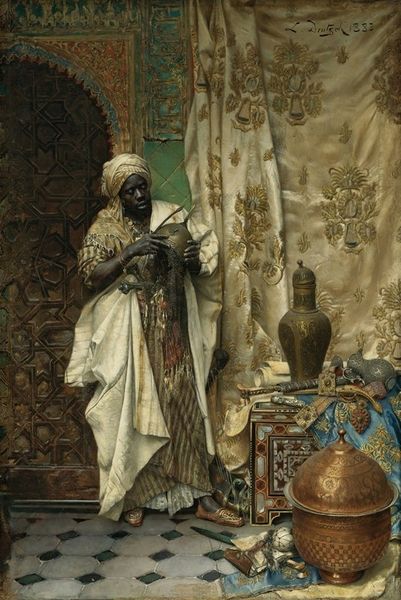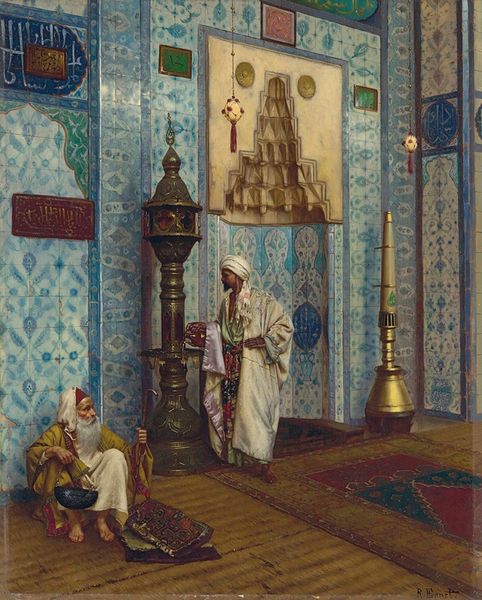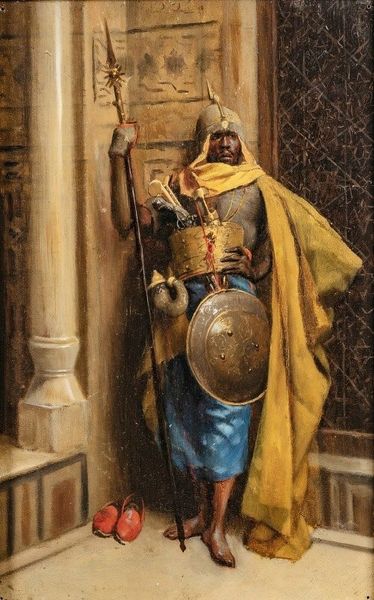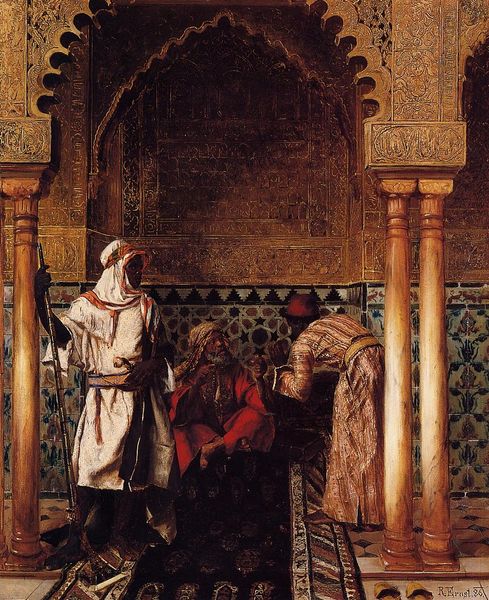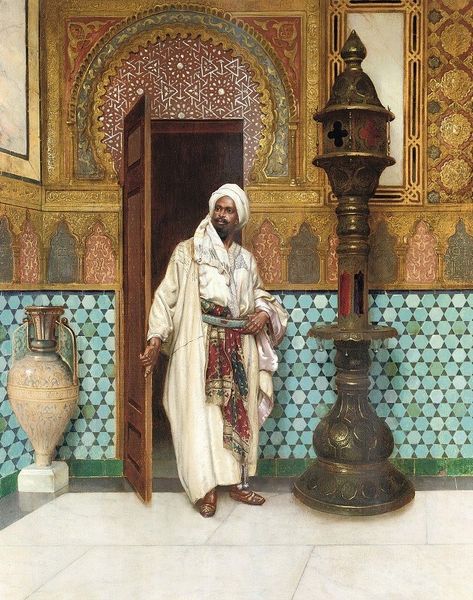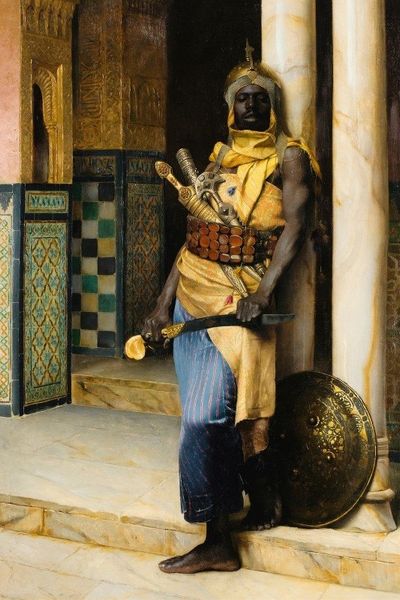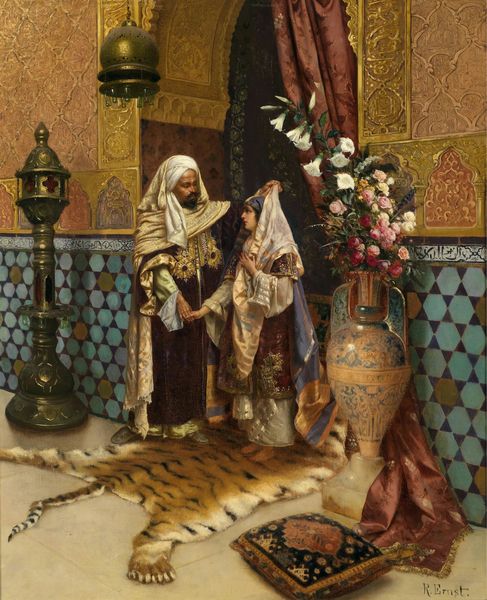
painting, oil-paint
#
portrait
#
figurative
#
painting
#
oil-paint
#
figuration
#
orientalism
#
genre-painting
Copyright: Public Domain: Artvee
Curator: This is Rudolf Ernst's work, often titled "Nubian Guard". While we lack a firm creation date, it exemplifies his broader Orientalist oeuvre. Oil paint is expertly used to render the details in this painting. What strikes you first? Editor: Immediately, the mood. It feels staged, exoticized. There's an almost theatrical quality to the guard’s posture and attire, like a tableau vivant carefully constructed for a Western audience. Curator: Precisely. Ernst’s meticulous process reveals itself in the rendering of fabrics and architectural details. Consider the intricate woodwork of the doorway behind the guard. Its craftsmanship speaks volumes, reflecting traditional techniques, maybe even pointing to local artisans employed, albeit anonymously. The materiality of the artwork seems to have been made to be consumed and collected. Editor: Absolutely, and let's consider the historical context. This image perpetuates a vision of the East—North Africa in particular—seen through a colonial lens. The guard, though ostensibly powerful, is rendered as an exotic figure, almost subservient within this highly constructed narrative of power. The depiction is charged with colonial-era power dynamics. Curator: I agree. However, I am fascinated by how Ernst manages to bring to life these different surfaces: The smoothness of the stone floors against the metalwork of the lamp, the cotton robes against the carved door. Do you think there is any commentary on industrial advances or craftmaking in this depiction? The painting may serve as a bridge between pre-industrial making and the burgeoning era of industrial art production, thus occupying an important turning point in art history. Editor: Interesting idea, however, I find that reading misses the social and political implications of portraying non-European subjects during this era. The artwork exoticizes the culture and perpetuates Western ideas of racial hierarchy, and it needs to be challenged to encourage critical discussions about cultural representation. The social context requires an examination of its time and today. Curator: True, true, the artwork’s themes definitely require understanding and recognition of this complexity, as we draw attention to the processes that lead to cultural and visual material production. This exchange helped me refocus and revisit my personal biases as I consider historical images. Thank you. Editor: Likewise, it’s important we recognize the historical weight these images carry and confront how the history can inform and promote new discussions that focus on power dynamics, the exchange of culture and gender. This picture may prompt uncomfortable discussion; it may also allow people to reconsider their own positions. Thank you.
Comments
No comments
Be the first to comment and join the conversation on the ultimate creative platform.
